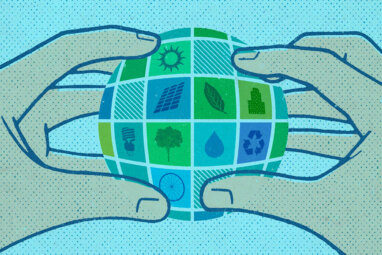To Transition to Net Zero, Model the Alternative
Performing a scenario analysis can help businesses weigh the costs of transitioning to net-zero carbon emissions — and the risks of maintaining the status quo.

The very idea of transitioning a business to net-zero carbon emissions can be daunting. Revamping processes to reduce emissions will likely take years, and switching to alternative energy sources across a globally distributed business is a complex endeavor. While some initiatives will save money through energy efficiency, others that need to be implemented will be costly — and risky, particularly if they involve bets on new technologies or business models. Without meaningful pressure from regulation or an external carbon price — and most businesses are experiencing neither today — a conventional financial case can be hard to make.
It can be tempting, then, for managers to try to delay their organization’s transition to net zero until they have greater certainty — that is, until they use scenario analysis to evaluate the potential costs of a likely worse alternative: standing still. When management teams evaluate their business against a future in which governments, competitors, customers, and investors all have transition plans, they realize that the true cost of transitioning to net-zero emissions should not be compared with the status quo — which, in a few years, will no longer exist — but with the increased costs and risks the business will face if it takes no action. Leaders’ attention shifts from the risks of climate affecting the business to a bigger agenda, which includes the obligation to change and the opportunity to thrive in a low-carbon business environment.
Analyzing Three Key Scenarios and Potential Shifts
Companies often start out using scenario analysis to get ahead of risks, but the process can also uncover counterintuitive opportunities in a net-zero future. For example, one mining company involved in high-carbon sectors, including oil, natural gas, and thermal coal, discovered that efforts to limit the rise in global temperatures to no more than 1.5 degrees Celsius, per the goals of the Paris Agreement, will actually create the best financial outcome for its business over the next 30 years. In this scenario, the reduced demand for those commodities would be far outweighed by the booming demand for other materials it mines that are essential for the transition to clean energy, such as the nickel and copper used in batteries and cables.




